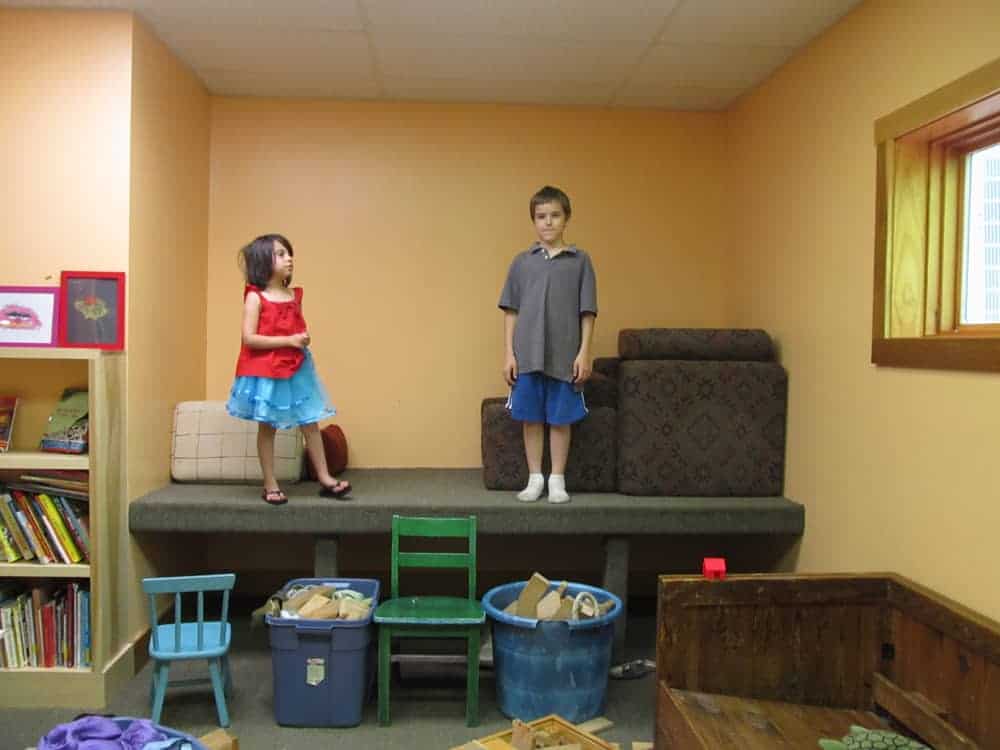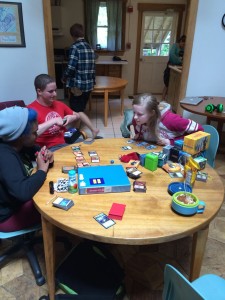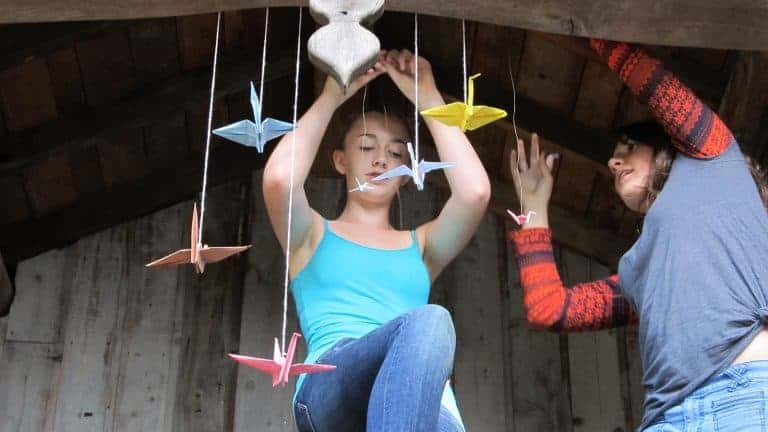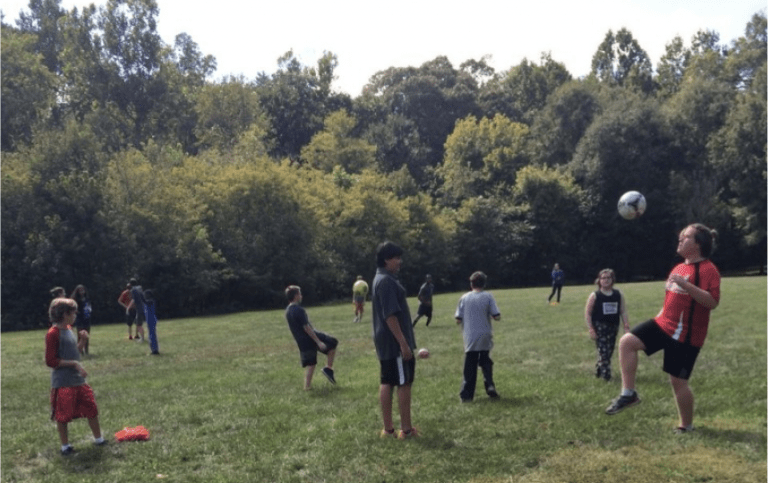A Day at Fairhaven
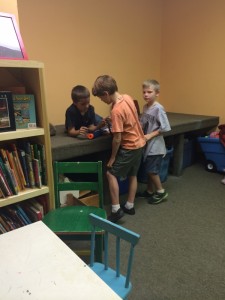 By Linda Jackson, Fairhaven parent and former Fairhaven staff member.
By Linda Jackson, Fairhaven parent and former Fairhaven staff member.
The one thing that makes my job as a staff member at Fairhaven School interesting and challenging is that it offers an ever-changing kaleidoscope of experiences. No day is ever quite the same as the one before, because the infinite potential of human creativity is unfolding before me on a daily basis. I have observed that when students are given the chance to create what they want, many unexpected and rich experiences evolve. I want to share some of what I see, with this written collage.
As I walk up the sidewalk there are a group of about eight older students who are talking, playing, and generally interacting. There is an ease to their interactions that suggests they have a deep comfort with each other; they seem to know each other very well. They laugh, tease, and play with each other; the talk never stops. Sometimes interactions are pushed to the edge of comfort and then flow back again to equilibrium.
When I open the front door of the building I am immediately confronted with a heated conversation between three 10-12 year old boys who are discussing the details of a game they have been playing. I notice that they disagree vehemently, each one stating strongly their opinion, and yet they walk away together to continue their game.
As I walk through the school I see an older student reading intently, apparently unaware of his surroundings or of any distraction. He even gets up and walks down the hallway while reading. When I stop and smile at him, wanting to say hello, he just looks at me and says, “I like to read.” A few people are in the kitchen: four students and one staff person. Some are eating, and one is involved in preparing some noodles. The conversation is light. There’s a discussion about someone’s recent discovery at the stream, and the subsequent ethical and legal implications of keeping the fossils that were found there.
Further on, I see four young girls huddled around their project that is spread over half of a large table. To the untrained eye it looks like a big mess! Pieces of candy have been cut into tiny bits, then separated into piles. All of this is arranged by some method of organization known only to the creators. There are perhaps three hundred bits of candy. The faces of the girls tell the story. They are animated and engrossed in their task and they are talking non-stop about the details of their project. There are high level negotiations going on about the distribution and arrangement of all the tiny pieces.
In another room, I see five students who are sitting around a table talking. At first it seems that they’re discussing a story, but then I realize that they are creating the tale as they go. An interactive game reminiscent of Dungeons and Dragons, it’s taken on a new twist. One of the boys has drawn a map and appears to be in charge of the paper game, as they call it. He presents scenarios to each player in turn, and they make choices and responses about their character. (Over the course of the year this game has evolved into a paperless version that can be played without the map.) All that’s required for this game is more than one player, a good memory and a fertile imagination.
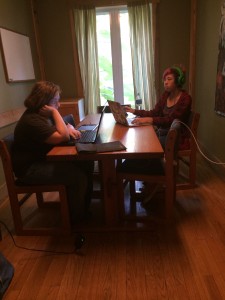 I wander into a more formal meeting where a group of students and staff are sitting around a large table discussing a rule infraction. It seems that one student, a small boy, has hit another child. There is passionate testimony by the witnesses, a tearful statement by the defendant and general chaos with everyone talking at once, before the person in charge calls the meeting to order. The child is subsequently charged with a rule violation and sentenced. The discussion continues outside of the room, as the students who were involved in the meeting talk about the outcome.
I wander into a more formal meeting where a group of students and staff are sitting around a large table discussing a rule infraction. It seems that one student, a small boy, has hit another child. There is passionate testimony by the witnesses, a tearful statement by the defendant and general chaos with everyone talking at once, before the person in charge calls the meeting to order. The child is subsequently charged with a rule violation and sentenced. The discussion continues outside of the room, as the students who were involved in the meeting talk about the outcome.
The theme I see weaving through my collage is conversation, creativity, negotiation and discovery. I could make a list of all the problem solving skills, social skills and academic skills these students are displaying, but since this is a collage, a more artistic piece, I will leave it to the reader to absorb, saving that discussion for another day.
I see Fairhaven School and other Sudbury Schools as a microcosm of society. Students and staff have the opportunity to experience life in the choices they make every day about how they spend their time, and how those choices impact them personally, and the other people in the community. Our little school can be a peaceful place or a hotbed of controversy and drama, as we bump up against each other and wrestle with issues of ethics, justice and fairness. I believe that this culture prepares students for the future in the best possible way.
This blog post was originally featured as an article on Fairhaven School’s previous website.
